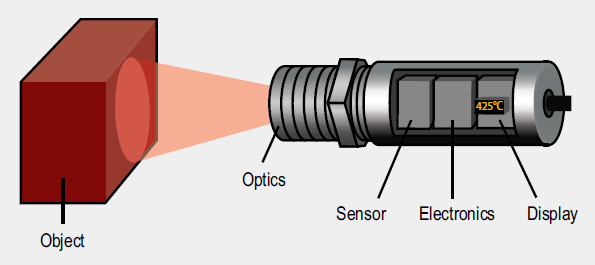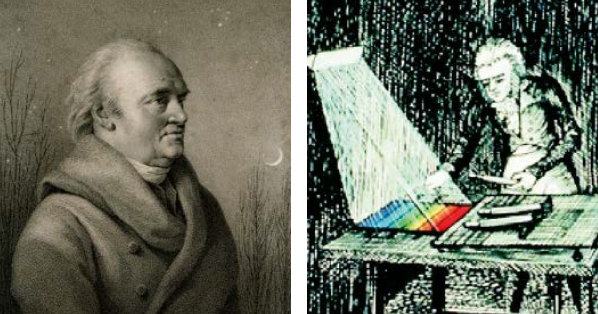The human eye views the world in visible light. Visible light is a small section of the radiation spectrum, with invisible light covering the majority of the remaining spectral range. Radiation found in invisible light has greater amounts of additional information.

Image Credit: Optris
The Infrared Temperature Measurement System
Each body with a temperature higher than absolute zero (–273.15 °C = 0 Kelvin) releases electromagnetic radiation from the surface. This radiation is proportional to its intrinsic temperature. One element of this apparent intrinsic radiation is infrared radiation, which can be utilized to measure the body's temperature. This radiation permeates the atmosphere. Using a lens (input optics), the beams can be focused on a detector element, generating an electrical signal that is proportional to the radiation.
Using successive digital signal processing, the signal is amplified and transformed into an output signal proportional to the object temperature. The measuring value can be shown on a display or released as an analog output signal, which supports a simple connection to control process management systems.

Infrared System. Image Credit: Optris GmbH & Co. KG
The benefits of non-contact temperature measurement are clear:
- Temperature measurements of mobile or overheated objects as well as objects that are in hazardous areas
- Very rapid response and exposure times
- Non-interactive measurement, so there is no influence on the measuring object
- Non-destructive measurement
- Measurement point durability, meaning no mechanical wear

William Herschel (1738 – 1822). Image Credit: Optris GmbH & Co. KG
Discovery of the Infrared Radiation
In 1800, while looking for new optical material, William Herschel inadvertently discovered infrared radiation. He blackened the end of a sensitive mercury thermometer and utilized it in a measuring system to examine the heating properties of unique colors on the spectrum.
The colors were projected onto a tabletop by shining beams of light through a glass prism. When the thermometer was moved into the dark area outside the red end of the spectrum, Herschel noted that the temperature still increased.
The temperature continued rising further in the area behind the red end of the spectrum. Ultimately, he discovered the maximum temperature point far beyond the red area. Today this area is known as “infrared wavelength area”.

 Download the eBook to learn more
Download the eBook to learn more

This information has been sourced, reviewed and adapted from materials provided by Optris GmbH & Co. KG.
For more information on this source, please visit Optris GmbH & Co. KG.